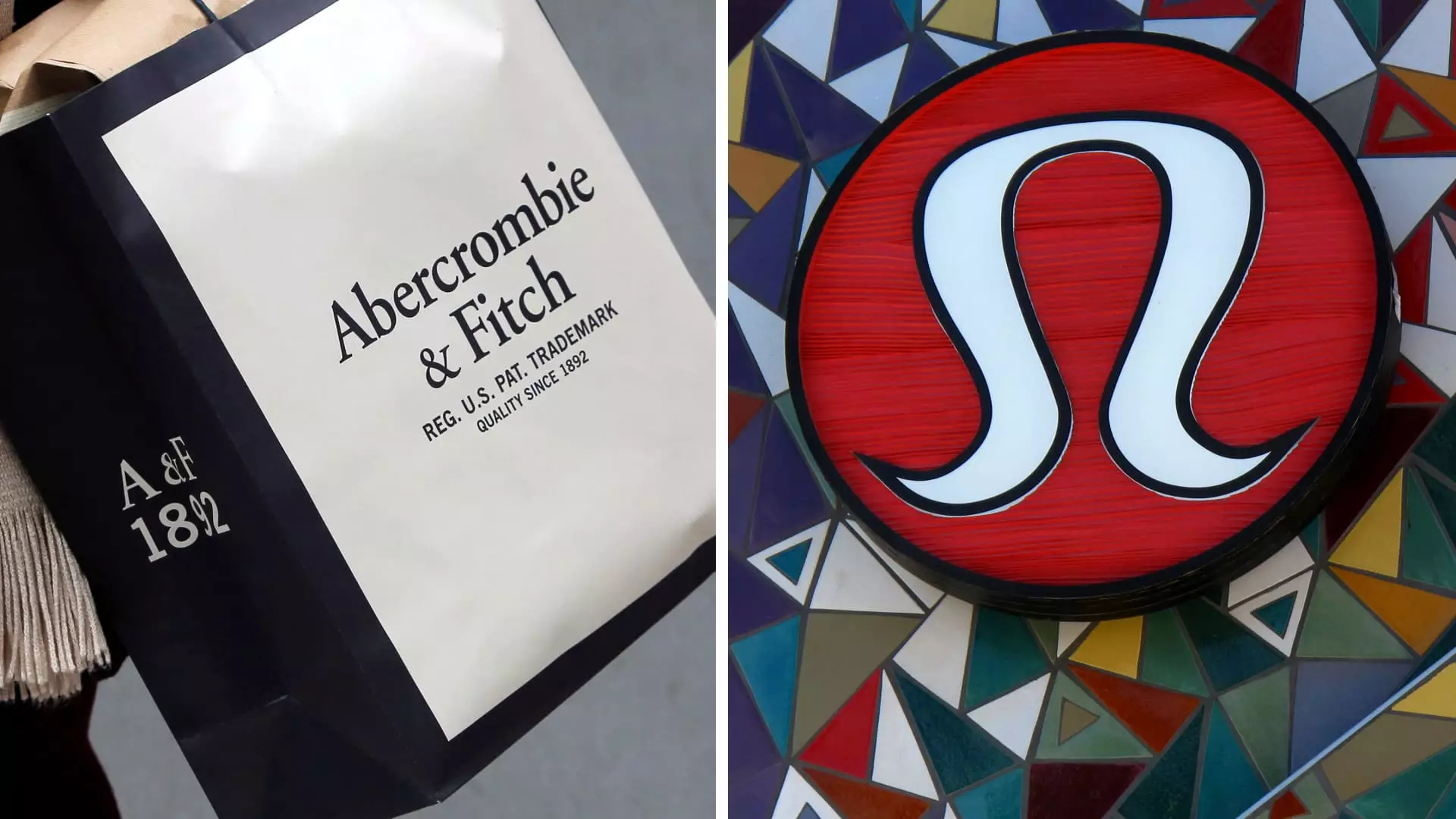The whirlwind of holiday shopping has always been a pivotal period for retailers, demonstrating consumer behavior and laying the groundwork for the coming year. Recent revelations from various significant retailers have painted a complex picture for the 2023 holiday season, leading to cautious optimism tempered by uncertainty in the market. While notable brands like Lululemon and Abercrombie & Fitch reported stronger-than-expected early results, the overall market response was lukewarm, highlighting a conundrum that many retailers may face as they navigate shifting consumer preferences and economic pressures.
On a surface level, many retailers reported encouraging sales figures, suggesting robust consumer interest during a critical shopping period. Lululemon, for instance, raised its fourth-quarter sales expectations to an impressive $3.56 billion to $3.58 billion, a notable improvement from earlier projections. This announcement was accompanied by an optimistic forecast for earnings per share, signaling strong operational performance and confident branding strategies tailored to attract shoppers. However, despite these promising numbers, Lululemon’s share prices took a hit, reflecting a broader trend in which investor expectations appear misaligned with company performance.
The stock market’s indifferent reaction to even positive retail news raises questions about the precise metrics that are driving investment decisions and evaluations. Railroads of expectation may have derailed for firms like Abercrombie & Fitch, where a mere increase in sales outlook to between 7% and 8% was interpreted by investors with skepticism. After two years of exponential growth, an anticipated slowdown prompted a stock decline of around 17%. This showcases a critical junction where investor confidence and actual sales growth diverge, revealing a deeper concern about the sustainability of such momentum in an increasingly competitive retail landscape.
Macy’s performance stood in stark contrast to some of its peers, exemplifying the concern over declining foot traffic and consumer spending in traditional brick-and-mortar settings. The department store anticipated sales figures at or below the previously projected range of $7.8 billion to $8.0 billion. Unsurprisingly, this led to an early-morning drop of over 6% in share prices. Unlike Lululemon and Abercrombie, which are buoyed by niche branding and a lifestyle-oriented consumer base, Macy’s struggles to reinvent itself amid the evolving retail sector, where experiential shopping and online convenience have become paramount.
The challenges facing legacy retailers like Macy’s underscore the urgency for them to reassess their strategies and business models. The integration of digital platforms, coupled with the urgency to offer personalized and compelling shopping experiences, is critical in arresting a decline that threatens market share. Without a cohesive strategy for differentiation, respected brands risk becoming obsolete in an era that increasingly prioritizes flexible and innovative consumer engagement.
The analysis of retail results cannot ignore the shifting dynamics of consumer behavior influenced by economic factors. The National Retail Federation projected modest sales growth of 2.5% to 3.5% for the holiday season, indicating a stark departure from the explosive growth rates seen in the post-pandemic era. Inflation remains a significant concern, driving consumers to be more selective in their purchases. This cautious approach may explain why even seemingly positive retail news meets with investor disappointment; expectations are set high based on past performance, leading to critical scrutiny of current results.
Moreover, the Mastercard SpendingPulse report indicating a 3.8% rise in holiday sales year-over-year reflects this cautious consumer confidence. However, with inflation considered, the real growth is likely negligible, reinforcing the notion that early indicators should be interpreted with a more discerning lens, particularly in light of economic pressures.
As retailers prepare for the upcoming year, the precarious balance between driving profitability and maintaining growth becomes increasingly crucial. Abercrombie’s CEO Fran Horowitz emphasized a shift toward enhanced profitability over unfettered sales growth, a move that might reassure investors but also signals broader strategic pivots across the sector. The emphasis on returning value to shareholders is becoming a frequent narrative across retail leadership, suggesting a potential paradigm shift in how companies articulate success moving forward.
As the annual ICR conference looms, prominent retailers will present early results and projections, setting the tone for the sector’s outlook. The reactions to these presentations will likely reflect the anxiety permeating the marketplace, where even good news faces scrutiny in an environment replete with uncertainty. Retailers that successfully navigate these dynamics, adapt to consumer expectations, and remain aligned with investor sentiments will be in a stronger position to thrive in the changing retail landscape.

